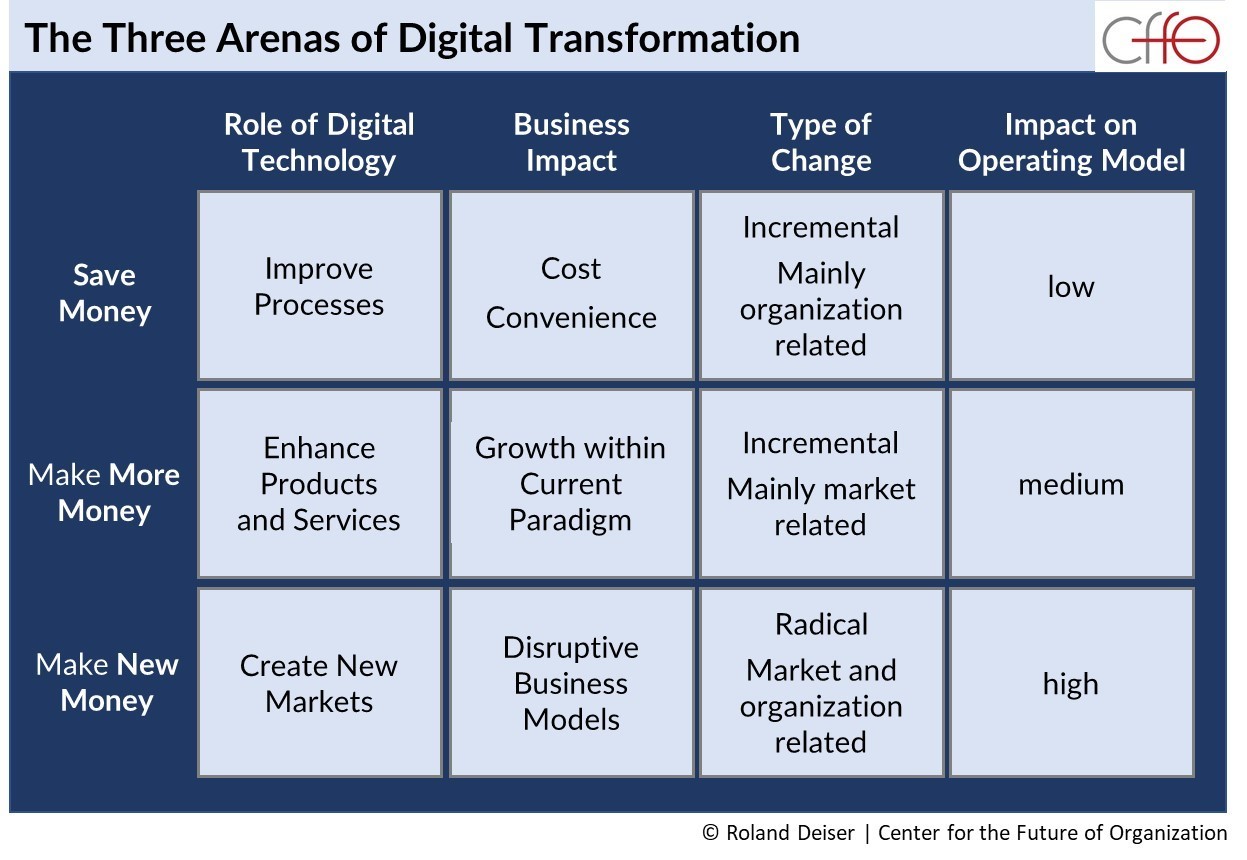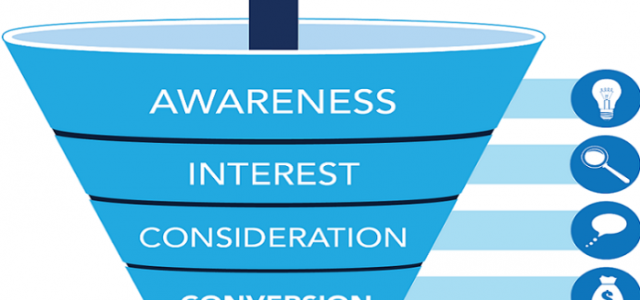Many organizations lack a clear terminology that distinguishes the digital enhancement of current processes and operations from strategic innovation efforts that redefine the rules of the game.
There is a major difference between making IT systems ready for a new generation of software architectures and creating entirely new value propositions that make traditional products and services obsolete.
To better structure a company’s transformational activity portfolio, it is helpful to use a strategic segmentation that identifies the various types of digitalization opportunities.
To better structure a company’s transformational activity portfolio, it is helpful to use a strategic segmentation that identifies the various types of digitalization opportunities. Siemens Power Services, for example, allocates its digital transformation efforts to three distinctive arenas they call “buckets”:
- Save Money – use digital technology to optimize existing processes, with the goal to save costs and improve overall efficiency and effectiveness.
- Make More Money – use digital technology to enhance the existing product/service portfolio with the goal to enhance its value for customers
- Make New Money – use digital technology to create entirely new revenue opportunities and market spaces, based on novel value propositions which often come with new business models, such as platform strategies.
According to Siemens PS CEO Tim Holt, the $10bn+ division he leads allocates about 60% of its transformation budget to “Saving Money”, 30% to “Making More Money”, and 10% to “Making New Money”.
Holt’s goal is to reduce the share of the less transformational activities in favour of the other two buckets, and he is aware of the different innovation strategy that each domain requires. The buckets help to structure activities and make it easier to communicate the rationale of change to employees and other stakeholders.
They also help to make the fuzzy and all-encompassing challenge of “digital transformation” more tangible and digestible.
- Process optimization efforts with the goal to Save Money are comparatively easy to identify and to implement. While they require only limited strategic creativity and courage, they yield measurable results – both in terms of operational efficiency and improved customer interface. They do not change the rules of the game as they are focused on improving the competitiveness within the existing paradigm. This makes them no less important; after all, they directly impact the bottom line, and they provide the foundation on which more innovative, frame-breaking ventures can build on. They are a must if companies do not want to fall hopelessly behind.
- Creating businesses that Make More Money challenges the current set-up of the organization; it requires a more flexible mindset to imagine new possibilities for existing products and services, which many companies try to foster through exercises in scrum, design-thinking, hackathons, and other formats. It also requires organizational innovation: to unleash creativity and increase the speed to market, many companies establish cross-functional teams that own the development process from beginning to the end, transcending functional silos and linear processes. These “agile teams” combine technological acumen and business acumen, i.e. they connect a deep appreciation of customer needs and evolving market conditions with a thorough understanding of what emerging technologies can do, and what is needed to apply them in the current business.
- The third bucket – Making New Money – is an entirely different challenge: Creating disruptive, industry-transforming business models requires not only extraordinary imagination, creativity, and guts – it shatters the established structure of the business ecosystem and unleashes a reconfiguration dynamic which threatens the existence of current revenue streams and the overall operating model of the business. This puts incumbents by default at a disadvantage as their long-nurtured strengths that were the basis of their competitive success suddenly turn into liabilities. Other than new entrants that do not come with the baggage of a hereto successful business model, they [incumbents] must deal with an existing swamp of legacy factors.
The table below provides a summary of the differences between the three strategic arenas of digital transformation.
Figure 1: Digital Transformation Arenas
While Saving Money belongs to a large part to the traditional domain of the IT department, the more frame-bending (more money) or even frame-breaking (new money) initiatives are primarily driven by the market and require novel collaborative network architectures that enable open innovation and co-creation with stakeholders across internal and external boundaries. The traditional organization with its linear processes and vertically structured functions is too slow and cumbersome for this task.
To achieve the necessary operational flexibility and speed, stakeholders from different departments and functions are forming temporary cross-functional units where they jointly address a defined business challenge. This concept of “agile teams” – and “agility” in general – has become a mantra in the context of digital transformation efforts, so the next instalment of this series will take a closer look at it.
This article is the third part of a LinkedIn series about Digital Transformation Challenges in Large and Complex Organizations. It is based on a qualitative study conducted by the Center for the Future of Organization at the Drucker School of Management at Claremont Graduate University.
If you would like to get immediate access to the entire analysis of our findings, you may download the full report at no cost here. In return, we’d love to learn about your perspective – feel free to comment and/or share your experience with the subject. Thank you!
Other articles in this series
- Digital Transformation Challenges – Part 1: Introduction and Overview
- Part 2: Is Digital Transformation really so special?
- Part 4: The agility challenge
- Part 5: Agility in practice: the swarm organisation @Daimler
- Part 6: The ambidexterity challenge
- Part 7: The Connectivity Challenge and the Art of Dealing with Boundaries
- Part 8: Organizing for Transformation – the Governance Challenge
Article by channel:
Everything you need to know about Digital Transformation
The best articles, news and events direct to your inbox










